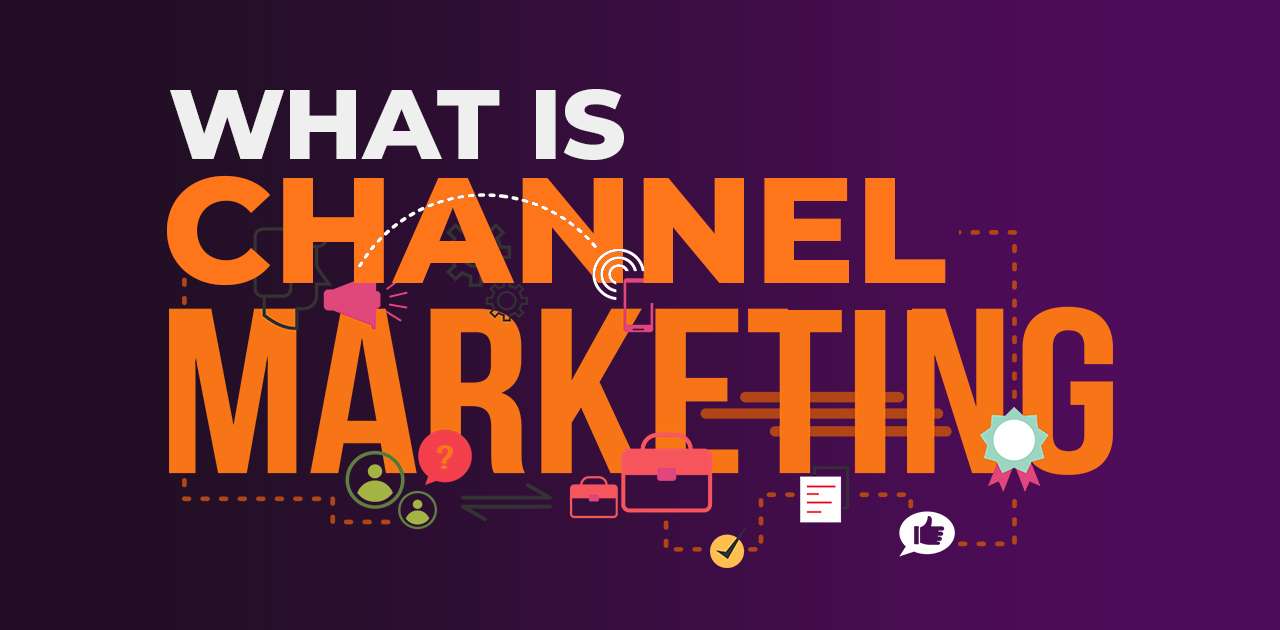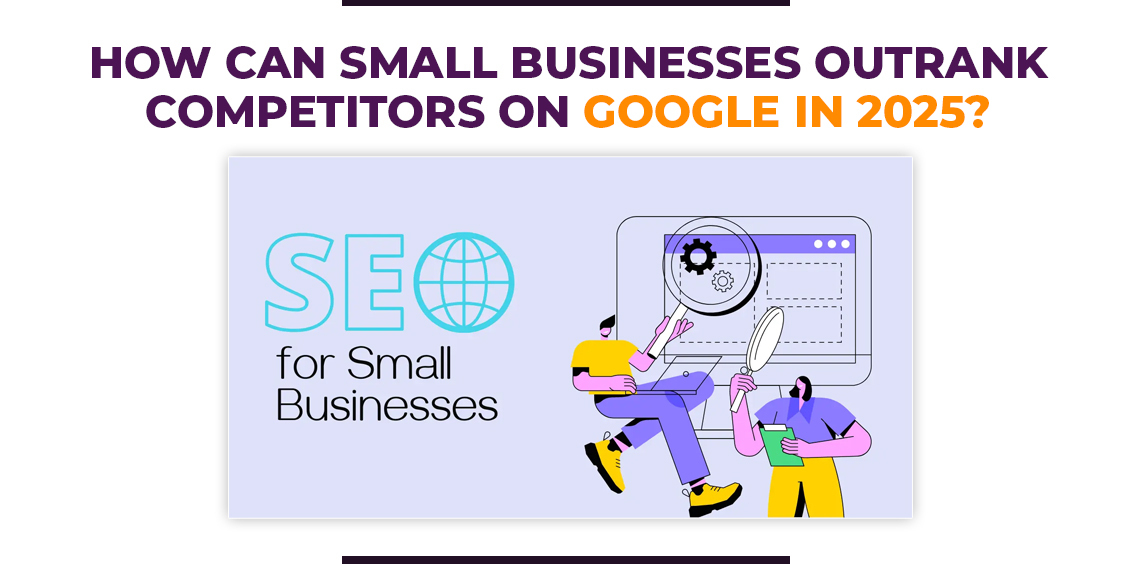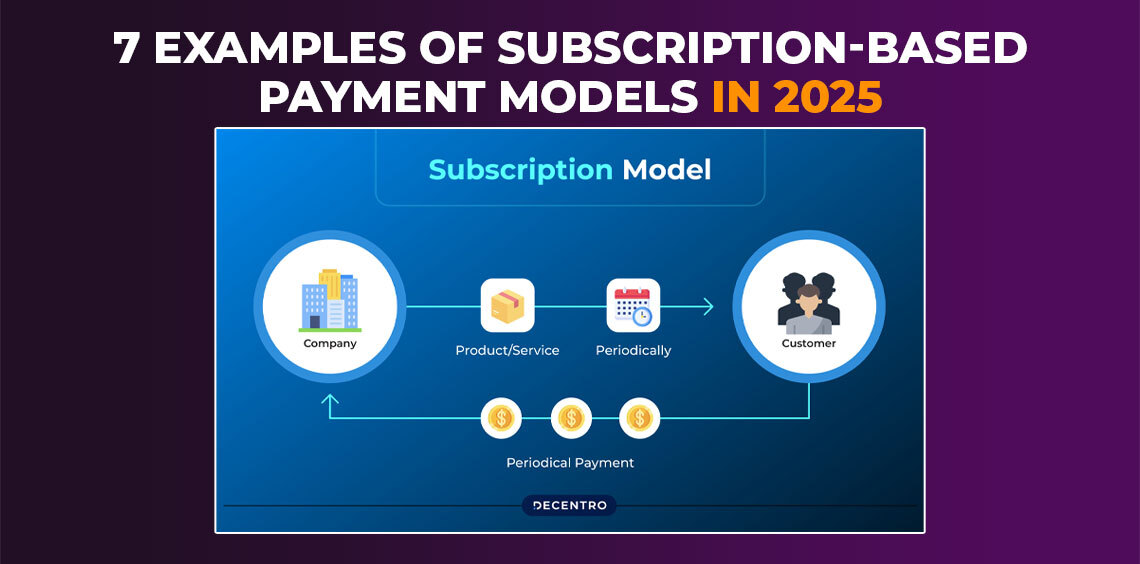Do you find it difficult to grow your business or reach more customers using your current sales strategies in the marketing sector? Are you having trouble advertising your product to the right people in this crowded market?
If so, don’t worry—channel marketing is a comprehensive solution that involves businesses working with external partners—such as distributors, retailers, or resellers—to promote and sell their products or services.
According to Writer’s Block Live, companies with an effective multi-channel strategy can retain up to 89% of their customers. This shows the power of engaging customers across various platforms to boost retention rates.
The goal of channel marketing is to create a mutually beneficial relationship in which the manufacturer and the channel partner benefit by assisting each other in meeting their sales targets. It is an affordable method of expanding reach, particularly for companies looking to expand without significant investments in direct sales personnel.
This blog will examine why channel marketing is such a powerful strategy, how to form strong partnerships, and how it can benefit your business in 2024. If you want to expand your business, channel marketing could be the perfect strategy.
Let’s see how it can help you grow your business. Let us GO!
Table of Contents
ToggleKey Takeaways
There is a lot to say about channel marketing; if you want to know how it works, its benefits, and why it is so important in 2024, read our full guide, and if you are short on time, check out these key takeaways.
- Channel marketing is advertising your product or service through third-party partners.
- Channel marketing is important because it enables businesses to benefit from their partners’ expertise and resources, such as their networks, marketing channels, and customer bases.
- Channel marketing components play a significant role in effective planning and management.
- These include channel selection, channel partner relationships, marketing support and resources, incentive programs, and performance tracking and analytics.
- In 2024, new marketing channels are constantly evolving.
- Key marketing channels are
- Direct channel marketing
- Indirect Marketing Channels
- Digital Marketing Channels
- Omnichannel Marketing
- Affiliate Marketing
- Channel marketing importance and relationships with the partners, specifically with
- Manufacturer to Distributor
- Manufacturer to Retailer
- Manufacturer to Wholesaler
- Manufacturer to Agent
- Online Channel Partnerships
- Important FAQs on channel marketing, its benefits, importance, and case studies.
What is Channel Marketing?
Channel marketing promotes products through third-party partners such as wholesalers, retailers, distributors, or online platforms like Amazon and eBay rather than selling directly to consumers. These partners act as intermediaries to help businesses reach a larger audience.
Channel marketing broadens a product’s appeal by utilizing the networks and influence of reliable partners. It’s more than just placing products on shelves or online; it requires continuous coordination and collaboration to promote the product from development to the end consumer effectively.
Through channel marketing, businesses can increase brand awareness, boost credibility, and drive sales growth.
Note: The multichannel marketing industry is growing fast and isn’t slowing down anytime soon. It’s expected to grow at 22.30% per year and reach $28.6 billion by 2030. This growth is mainly because more customers use mobile devices to shop and connect with brands through different channels. So, rather than declining, multichannel marketing is set to keep expanding for years to come!
Key Components of Channel Marketing
Effective channel marketing requires careful planning and management. According to Webinar Care, 90% of customers expect to interact with brands across multiple channels. This reflects the growing demand for a seamless, multi-channel customer experience.
Here are the key components:
1. Channel Selection
The first step is determining which channels best suit your business goals and where your target audience is most active. It’s about finding the right places to connect with your customers.
Considerations:
- Analysis of Strengths and Weaknesses: Depending on your mission and objectives for your target market, you need to evaluate the suitability of the various channels available.
- Alignment with Business Goals: Ensure the selected channels align with your business objectives.
2. Channel Partner Relationships
The most critical component of your sales channel system’s overall performance is managing and cultivating strategic growth and interpersonal relationships with your channel partners.
Channel partners not only sell products, but they also play an important role in
- Offering additional services to end customers
- Managing supply chains and inventories
- Making entirely new products from specifications.
- Streamlining the implementation process for customers
- Developing complementary products.
- Providing comprehensive advice and guidance to growing companies.
Key Factors:
- Clear Communication: Communicate freely and regularly to understand goals and strategies clearly.
- Shared Goals: Collaborate in such a way that partnership involves the observation of goals and objectives on each side.
- Ongoing Collaboration: To maintain the relationship despite the market fluctuations and efficiency gains.
3. Marketing Support and Resources
If you provide your channel partners with the right marketing tools and support, they can promote your product more effectively. It’s all about giving them what they need to succeed.
Support Elements:
- Co-Branded Materials: Create marketing content that aligns with you and your partner’s brand. 82% of companies say they use content marketing.
- Training: Features and advantages of the products, along with the tricks and tips about “How to Sell the Product.”.
- Promotional Tools: Give employees access to information and tools that could help them market the products.
4. Incentive Programs
Promotional plans help channel partners make smart choices and give your products the attention they deserve. When you lay out clear, compelling strategies, you inspire them to focus on driving sales and boosting your brand. It’s all about ensuring they’re excited and equipped to promote your products effectively.
Types of Incentives:
- Rewards: Monetary rewards (such as bonuses and commissions) should be given to the employees.
- Discounts: To achieve sales milestones, offering a discount on the product plays a vital role.
- Bonuses: The performance-based incentives lead to the guarantee of better performance outcomes.
5. Performance Tracking and Analytics
As channel marketing requires ongoing activities, measuring their effectiveness based on the implemented strategies is essential.
Key Metrics:
- Sales Data: Supervise the sales rate to recognize various outlets and their effectiveness in achieving the intended objectives.
- Customer Engagement: Assess your company’s customer-centricity by observing how customers react and what they say.
- Data-Driven Decisions: Apply the findings from analytics to fine-tune plans and maximize channel effectiveness.
These components will remain relevant as the marketing environment evolves while providing the basis for growth and competitive superiority.
Marketing Channels in 2024 and Their Types
In 2024, marketing channels have evolved and become more complex to reach today’s diverse customer base effectively. According to recent data, 87% of retailers believe a multi-channel marketing strategy is crucial for their success and return on investment. Yet, only 8% have managed to implement such a strategy fully.
Here’s a breakdown of the key marketing channels:
Types of Marketing Channels in 2024!
1. Direct Marketing Channels
Direct selling channels involve selling products directly to the end user without any involvement from intermediaries.
Examples:
- E-commerce Websites: Companies like Amazon and Shopify allow businesses to sell directly to customers online.
- Direct Mail: Directly delivered physical papers reaching the targeted customers.
- Telemarketing: One-off marketing communications consist of a direct phone call to consumers with an offer to buy a particular product or use a specific service.
- Direct response advertising: It includes infomercials and web-based advertisements that ask viewers to take immediate action, such as calling or making a purchase, in response to the advertisement.
Advantages:
- Complete control over the customer experience.
- Direct feedback from customers.
2. Indirect Marketing Channels
Sometimes, a businessperson conveys his products to consumers through other entities, such as wholesalers, distributors, or retailers.
Examples:
- Retail Partnerships: Selling products through established retail chains like Walmart or Target.
- Distributor Networks: Leveraging distributors to expand product reach into new regions or markets.
Advantages:
- Access to established customer bases.
- Reduced need for a large sales force.
3. Digital Marketing Channels
Digital marketing is also called online marketing; it refers to promoting goods and services through online media channels.
Examples:
- Social Media: Platforms like Facebook, Instagram, and LinkedIn for targeted advertising and engagement.
- Search Engine Marketing (SEM): Using Google Ads to be displayed in the search results.
- Email Marketing: Direct sending of newsletters or promotional emails to specific consumers who are in a particular list or category.
Advantages:
- Cost-effective and scalable.
- Real-time analytics and targeting.
4. Omnichannel Marketing
Omnichannel marketing combines multiple channels to ensure a consistent experience across these platforms. According to Neil Patel, CMO and co-founder of NP Digital, “Every single company we worked with that saw growth focused on omnichannel marketing and kept expanding.”
Examples:
- Integrated Campaigns: Combine offline special offers with online advertising and SMM. Social media marketing uses different social media platforms to promote our services and products. It entails creating content to engage our target audience and increase sales.
- Unified Messaging: The brand’s message is conveyed throughout the email to communicate the deals, the website it uses to market itself, the social media pages it maintains, and the physical locations it operates.
Advantages:
- Enhanced customer satisfaction and loyalty.
- Consistent brand experience across platforms.
5. Affiliate Marketing
Affiliate Marketing Affiliate marketing involves partnering with others who promote your product in exchange for a commission on sales. According to Outbrain, affiliate marketers’ monthly income varies greatly depending on the niche, with finance ($9,296) and technology ($7,418) being the highest earners. On the lower end, niches like arts and crafts ($1,041) and pets and animals ($920) generate the least income.
Examples:
- Influencer Partnerships: Collaborating with influencers who promote products to their followers.
- Affiliate Networks: Platforms like Amazon Associates, where bloggers and website owners earn commissions by promoting products.
Advantages:
- Performance-based, so costs are tied to actual sales.
- Ability to reach new, highly targeted audiences.
Note: For more details about controlling your web presence, read our tutorial: Top 50 SEO Questions Every Brand and Marketer Should Know. This is an important resource that you should use to help improve your channel marketing models.
Channel Marketing: Its Importance in the Year 2024

Marketing through channels continues, with businesses experimenting with different marketing channels to conduct business. Based on direct, indirect, digital, omnichannel, and affiliate models, businesses need to identify and choose the appropriate combination of channels that meet their objectives and consumers’ expectations.
Using these channels is not merely a fashion but a necessity for businesses to compete in 2024. This implies that adequate knowledge and use of markets’ various marketing channels can enhance marketers’ visibility and lead generation, increasing marketer performance.
Important: Multichannel TV ad revenue is projected to hit $44.79 billion by the end of 2025, up from about $43.1 billion in 2022.
Channel Marketing Relationships
To market your product effectively, it’s important to understand the various types of channel marketing relationships and how they operate. Each type has its strengths and weaknesses, so this knowledge helps you choose the right partners and manage your channel marketing program effectively.
In short, knowing the ins and outs of these relationships will set you up for success.
According to Harvard Business Review, around 73% of retail consumers use multiple channels when shopping for products and services. This underscores the importance of offering a seamless multi-channel shopping experience to meet customer expectations.
1. Manufacturer to Distributor
The manufacturer partners with a distributor in this setup to get the product to retail stores or customers. This allows the manufacturer to focus more on production while the distributor oversees the sales and distribution.
2. Manufacturer to Retailer
Here, the manufacturer sells directly to retailers, who then market the product to customers. This gives the manufacturer more control over how their product is presented and branded to consumers.
3. Manufacturer to Wholesaler
In this model, the manufacturer sells large quantities to wholesalers, who distribute the product to retailers. It’s ideal for manufacturers looking to reach a bigger market without managing direct retail relationships.
4. Manufacturer to Agent
In this relationship, agents act as middlemen, selling products from manufacturers to consumers or retailers. They don’t own the product but earn a commission on sales. This is a great option for manufacturers looking to enter new markets without investing heavily in market development.
5. Online Channel Partnerships
Partnering with online retailers or platforms is crucial today. These relationships allow manufacturers to reach international markets cost-effectively and expand their reach with minimal overhead.
How to Develop a Successful Channel Marketing Partnership
It is crucial to note that building strong channel marketing partnerships involves rigorous planning and consistent cooperation. Here are some steps to help you develop strong, mutually beneficial relationships with your channel partners:
45% of the respondents mentioned that the content production workflow represents a striking problem for SCM.
Report by 2021 Content Management & Strategy Survey, CMI
Here’s how you can develop strong, mutually beneficial relationships with your channel partners:
- Identify the Right Partners
First, you must identify which companies may be potential partners for your business and have expertise in properly advertising your product.
For example, if you are operating a business in the tech sector, it would be wise to acquire an existing IT services firm with established credibility and relationships within the industry.
Those who have served on the same project know the field you are operating in, and those with relevant people to contact.
- Set Clear Expectations
As soon as you begin the project, be specific about your goal. This includes defining each partner’s actions, their obligations, and how performance will be measured.
For example, if you are partnering with a retail firm to market your items, it is advisable to map out specific targets and promotional campaigns. There should be efficient communication in the relationship to avoid comprehensible hitches that are likely to occur.
- Provide Support and Training
Ensure your partners have the resources and information to market your products effectively. This could entail extending training, collateral, and copies of promotional items.
For example, a software company may provide webinars and detailed instructions to a new partner on effectively promoting their product.
- Develop Joint Marketing Campaigns
Discuss with your partners creating combined marketing initiatives that include the unique selling propositions of all friendly parties. This type of collaboration involves co-branded advertising, cross-promotions, and associated customer communication activities.
For example, an automotive company might collaborate with a well-known tire company on an advertising campaign to demonstrate that its products are safe and reliable.
- Monitor and Evaluate Performance
Make it your practice to constantly check your channel partner’s performance and give feedback when due. The managers should use data and analytical tools to check the partnership’s efficiency and effectiveness and make changes if needed.
For a partnership to be profitable, it has to achieve the targets agreed upon in advance. If, for any reason, a campaign is not performing as anticipated, swift changes based on performance information can return the partnership to the right track.
- Maintain Open Communication
Communicate with your partners regularly so that any misunderstandings that arise are promptly addressed. Constant follow-ups and status reports keep the relationship more robust and ensure a mutual understanding of expectations and plans.
Effective communication also promptly addresses any problems, which maintains partnership productivity.
- Incentivize Success
Use reward power to ensure that your partners perform to the fullest of their abilities. This can include monetary compensation, additional bonuses, and privileges that will make them focus on your product. For instance, using bonuses to achieve specific targets can encourage your partners.
Given these steps, many strong channel marketing partnerships can be achieved in business to promote growth and profitability. This makes concepts such as channel partnerships and telecommunications companies promoting Apple iPhones so effective in the physical world.
Working with a premier digital marketing agency like Ellington Technologies can also be useful, which is another way to gain a competitive edge in today’s marketing landscape.
Note: Going deeper into SEO’s counterpart, read our article on SEO vs. SXO: Understanding the Difference and How to Make Them Work for You.
The Future of Channel Marketing
Several major trends will define channel marketing in the future. The specifics will be even more digital-driven; artificial intelligence paired with big data analysis will play a crucial role in this process. It is essential to note that e-commerce will keep increasing, forcing organizations to embrace digital and omni-channel strategies.
According to Writer’s Block Live, approximately 72% of consumers prefer to engage with brands through multiple channels. This highlights the growing demand for a flexible, connected customer experience across various platforms.
Social responsibility is another key perspective; environmental concerns will become significant. Reaching new customers will be possible in emerging markets, and improving customers’ experiences will continue to be vital, aimed at a convenient and appropriate level of engagement across the touch points.
FAQs for Channel Marketing
What is an example of a marketing channel?
A prime example of a marketing channel is Amazon, a powerful online platform where multiple sellers list and sell their products directly to consumers. Another example is a retail store that offers a range of products directly to shoppers, providing a hands-on purchasing experience.
What is channel strategy in marketing?
A channel strategy is a plan that businesses use to determine the best routes for delivering their products or services to customers. It involves selecting the most effective marketing channels, such as online, retail, or direct sales, and aligning them with business goals.
A successful channel strategy maximizes reach, optimizes resource use, and ensures consistent brand messaging across all platforms.
What is the function of channel marketing?
The function of channel marketing is to manage and optimize the pathways through which a product or service reaches the end customer. The company should maintain a good relationship with its partners, including distributors or resellers, and ensure they share the brand’s interests.
Channel marketing enables organizations to extend their market capacity and boost sales and customer satisfaction by providing products in the market.
Final Words
Channel marketing is a powerful strategy for increasing brand awareness, generating revenue, and creating strong connections. Because of the ever-changing environment, businesses must stay relevant when interacting with consumers via various marketing channels. I hope you learned a lot from this guide, as it contains a lot of information.
Effective channel marketing management is an ongoing process that helps your company meet its current and future needs.
So, that’s all. Tell me what you think is the most important factor in channel marketing.





